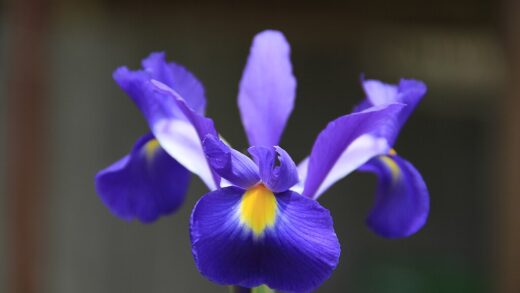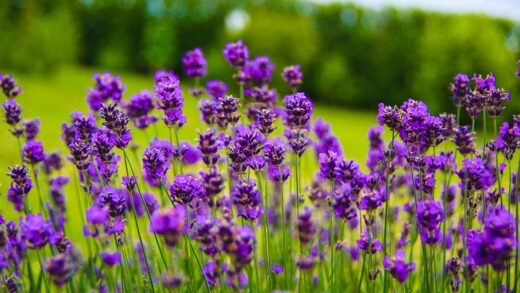Fuchsia (Fuchsia), this enchanting flowering plant originating from South and Central America, as well as New Zealand and Tahiti, requires special care, especially regarding its water supply. In its natural habitat, in cool, humid mountain forests or tropical cloud forests, it is accustomed to regular moisture but also to good drainage. These natural conditions fundamentally determine its watering needs when grown in the garden or indoors. It is important to understand that the fuchsia is not a drought-tolerant plant, so adequate hydration is crucial for its healthy development and abundant flowering.
In its native environment, the fuchsia often experiences light, regular rainfall rather than prolonged, torrential downpours. This precipitation pattern has also shaped its root system, which is typically fine and relatively shallow, enabling it to efficiently absorb moisture from the upper soil layers. Consequently, fuchsias are sensitive to soil популярн, as their shallow roots can quickly become deprived of moisture. One of the secrets to successful cultivation is therefore to mimic these conditions, ensuring continuous but not excessive moisture.
The high air humidity 커피 present in its homeland also plays a significant role in the plant’s water balance. Humid air reduces water loss through the leaves, i.e., transpiration. In contrast, in drier garden or indoor conditions, the fuchsia may transpire more intensely and therefore require more frequent watering to compensate for moisture loss. By mulching the soil, for example, we can help conserve soil moisture and somewhat reduce evaporation.
In summary, to understand the fuchsia’s water needs, it is essential to know the specifics of its original habitat: a cool, moist, well-drained, and humid environment. The goal of our watering practice should be to replicate these conditions as accurately as possible. This well-founded knowledge can protect us from many common watering mistakes and help us avoid stagnant water, which is fatal to the roots, while ensuring the plant receives the necessary moisture.
The role of water in the fuchsia’s life
Water plays a fundamental and irreplaceable role in the life of every plant, including the fuchsia, forming the basis of numerous physiological processes. Water ensures the turgor pressure of cells, which is responsible for the plant’s firmness and the tension of its shoots and leaves. Additionally, it functions as a solvent, allowing nutrients in the soil to dissolve and be absorbed by the roots. Lack of water immediately negatively affects these processes, and the first visible sign is often the wilting of leaves.
More articles on this topic
The role of water in nutrient absorption is particularly important. Minerals vital for the fuchsia can only be absorbed through the root hairs and enter the plant’s transport system if they are dissolved. If the soil is too dry, the nutrients, even if present, cannot be utilized by the plant, which leads to deficiency symptoms, poor growth, and a reduced willingness to flower. Therefore, a continuous, balanced water supply is essential for the fuchsia’s optimal nutrition.
Water also plays a key role in cooling the plant, especially during warmer summer periods. Evaporation from the leaf surface, i.e., transpiration, removes heat from the plant, helping it to avoid overheating. Fuchsias located in sunnier spots or in warmer environments transpire more intensely, so their water needs are also higher. If they do not receive enough water in these conditions, they can easily suffer тепловой stress.
It is therefore evident that water for the fuchsia means much more than simply “quenching thirst”; it is an essential element for general health, vitality, growth, and abundant flowering. Developing a correct watering practice is therefore one of the most important pillars of successful fuchsia cultivation, as water ensures the plant’s internal balance, nutrient supply, structural integrity, and thermoregulation.
Factors influencing watering frequency
There is no golden rule as to how often a fuchsia should be watered, as the plant’s current water needs are determined by a combination of various factors. These include the plant’s size and developmental stage, the pot’s size and material, the type of potting mix used, as well as environmental conditions such as temperature, air humidity, number of sunshine hours, and air movement. All these aspects must be considered when establishing an optimal watering regime.
More articles on this topic
Among environmental factors, temperature and air humidity are of crucial importance. At higher temperatures and lower air humidity, the plant’s evaporation (evapotranspiration) increases, the soil dries out faster, and more frequent watering is necessary. Conversely, during cool, cloudy periods with high air humidity, the fuchsia’s water needs decrease significantly. Wind also has a drying effect, so plants in windy locations require increased attention.
The individual characteristics of the plant are also decisive. A larger fuchsia with lush foliage generally uses more water than a smaller, younger specimen. Plants in the active growth phase or период обильного цветения also have higher water needs than those in a dormant period or recently repotted. The composition of the potting mix is also not negligible: a soil mix with good drainage and a loose structure may require more frequent watering than heavier soil that retains water better.
Last but not least, the type and size of the pot also influence watering frequency. Clay pots, due to their porous material, allow some water to evaporate through the pot walls, so the soil in them dries out faster than in plastic pots. Smaller pots contain less soil and water and may therefore require re-watering sooner than fuchsias grown in larger containers. The most important thing is always to check the soil moisture rather than adhering to a rigid watering schedule.
Correct watering techniques
The basis of a correct watering technique is a careful check of the soil moisture before each watering. There are several proven methods for this: the most common is the finger test, where you insert a finger 2-3 centimeters (about 1 inch) into the soil to feel its moisture. You can also use a moisture meter or simply lift the pot to deduce the soil’s water content based on its weight. It is important to know that the soil surface can be deceptive and dry out faster while deeper layers still contain sufficient moisture; the goal is a uniformly moist, but not soggy, root zone.
When you deem it time to water, do so thoroughly, until water appears in the drainage holes at the bottom of the pot. This method ensures that the entire root ball is moistened and helps to flush out any excess salts that may have accumulated in the soil. Avoid frequent, shallow watering in small amounts, as this leads to shallow root development, and the deeper roots can easily remain dry.
The most ideal time for watering is generally early in the morning. At this time, the plant has enough time to absorb water before the hottest part of the day, and the leaves also dry quickly, reducing the risk of fungal diseases. Evening watering is the second-best option, but then pay particular attention to ensure the leaves, if possible, do not remain wet overnight. Watering in strong midday sun should be avoided, as water droplets on the leaves can cause burns.
Regarding the watering method, watering from the top is the most common, but occasionally watering from the bottom can also be effective, especially for plants with dense foliage where water has difficulty reaching the soil surface. In this case, the pot is placed in a saucer पानी filled with water for about 30-60 minutes so that the potting mix can absorb the necessary moisture from below. Whichever method you choose, ensure that the plant does not sit in stagnant water for a long time after watering; excess water should always be removed from the saucer.
Signs and dangers of overwatering and underwatering
Overwatering is one of the most common mistakes in fuchsia cultivation and, unfortunately, can have fatal consequences. Warning signs include yellowing of leaves, which often starts પાણી the lower leaves, followed by leaf drop. Paradoxically, even an overwatered plant can wilt, as the roots популярн due to the water displacing air and become unable to absorb water. Other symptoms can be soft, limp stems and root rot, often identified by an unpleasant, musty odor 커피 from the soil.
The cause of damage from overwatering is the fact that in constantly water-saturated soil, there is not enough oxygen, which leads to root suffocation and death. The oxygen-deficient, anaerobic environment favors pathogenic fungi that cause root rot. Damaged, rotting roots can no longer supply the plant with either water or nutrients, which leads to the plant’s demise. Therefore, a potting mix with good drainage and thoughtful watering are crucial.
Underwatering, тепловой though perhaps less drastic, can also cause serious problems. Its signs are wilting leaves that may initially recover after watering, dry and brown leaf edges, and premature leaf drop, which also often starts with the older leaves. In an underwatered fuchsia, flower buds may also drop, and the plant’s overall growth slows, becoming stunted.
Both extremes, excessive and insufficient water supply, represent severe stress for the plant and have long-term consequences. Continuous overwatering leads to irreversible root damage and the complete death of the plant. Repeated underwatering weakens the fuchsia, makes it more susceptible to pests and diseases, significantly reduces its willingness to flower, and ultimately can also lead to the plant’s decline. The goal is therefore to ensure a balanced, uniform moisture content.
Special watering considerations
When watering fuchsias, special attention should be paid to certain specific situations, such as the overwintering period. Fuchsias that are overwintered need significantly less water, as their growth slows or stops completely. During this period, the soil should be allowed to dry out more between waterings, providing only enough moisture to prevent the roots from drying out completely. Overwatering then poses a particularly great danger and can easily lead to the loss of the plant.
The water needs of newly repotted or young fuchsias can also differ from those of adult specimens. These plants have a smaller, less developed root system and therefore generally require less water than their already well-established relatives. It is important to allow the soil to dry out slightly between waterings after repotting to encourage the roots to grow into the new potting mix. Avoid constantly soggy soil, as this can hinder root development.
It should also be considered that, although general watering principles apply to all fuchsias, some species or varieties may have slightly different tolerances. For example, trailing fuchsias, which are often grown in hanging baskets, can dry out faster due to increased air circulation and limited soil volume, and may therefore require more frequent checks and possibly more frequent watering. If you are growing less common varieties or varieties with special needs, it is worth researching their individual water requirements.
Finally, water quality is also worth mentioning. Although fuchsias are generally not overly sensitive in this regard, very hard tap water can, in the long term, cause salt accumulation in the soil, which can damage the roots. If possible, collecting and using rainwater is ideal. If you can only water with tap water, it is advisable to let it sit for at least 24 hours so that some of the chlorine can evaporate. Soil with good drainage and adequate drainage of the pots help to mitigate the negative effects of possible salt accumulation.


















